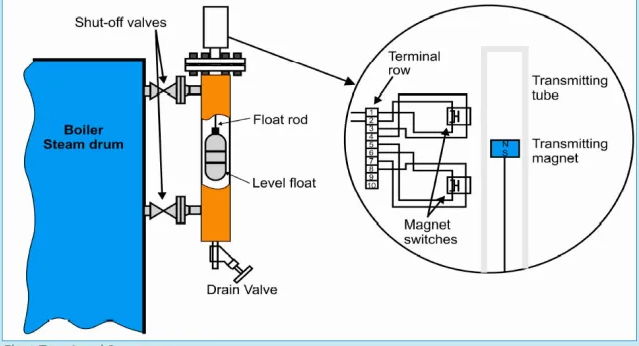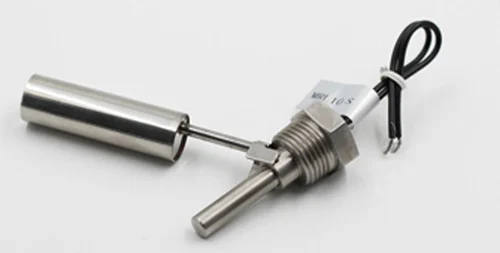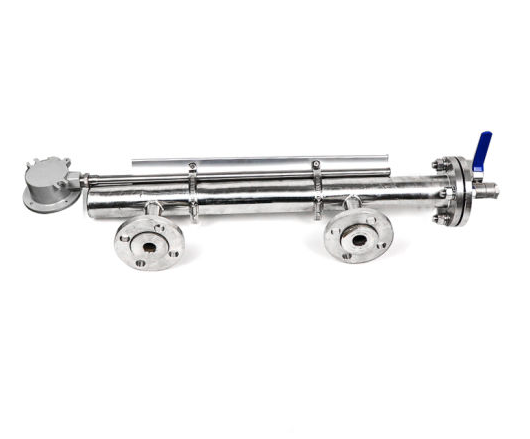Table of Contents
Boilers Float & Level Valve: A Comprehensive Guide to Optimize Your Boiler’s Water Level
Steam Boiler float and level valves are important for keeping the water level in a boiler at the right level. This is important for the efficient and safe operation of the boiler.
The float valve works by opening and closing a valve in the boiler depending on the water level. When the water level is low, the float valve opens and allows more water to flow into the boiler. When the water level is high, the float valve closes and prevents more water from flowing into the boiler.
The level valve is a separate valve that is used to control the water level in the Steam boiler. The level valve is usually connected to a float valve, so that the two valves work together to keep the water level at the right level.
Thermodye Engineering Systems understands the importance of boiler float and level valves, and we can help you to optimize the water level in your Industrial boiler. We offer a variety of services, including installation, maintenance, and repair of Industrial steam boiler float and level valves.
Controlling the Water Level in Boilers for Safe and Efficient Operation
Controlling the water level in a boiler is crucial to ensure safe and efficient operation. The water level needs to be maintained within a specific range to prevent overheating or running out of water, which can lead to various issues.
Methods of Water Level Control:
There are several methods used to control water levels in boilers. Two common methods are:
Gage Glass: This method involves the use of a transparent glass tube, known as a gage glass, which allows the operator to visually monitor the water level inside the boiler. This method provides a simple and cost-effective solution.
Electronic Sensors: Electronic sensors, such as electrodes or capacitance probes, offer a more accurate alternative to gage glasses. These sensors indirectly measure the water level and provide real-time data. However, they may be more expensive than gage glasses.
Purposes of Water Level Control:
The water level control in a boiler serves several important purposes, including:
Maintaining Proper Heat Transfer: The water in a boiler absorbs heat from the fuel combustion. This heat is then transferred to the steam, which drives turbines or other equipment. If the water level is too low, there won’t be enough water to absorb heat, leading to overheating and potential damage to the boiler.
Preventing Overheating: A low water level in the boiler can cause overheating, which may result in damage to the boiler tubes. Overheating can even lead to fires, posing severe safety risks.
Preventing Water Hammer: Water hammer is the sudden increase in pressure caused by the rapid opening or closing of valves. Maintaining the proper water level helps prevent water hammer, which can damage both the boiler and the piping system.
In conclusion, controlling the water level in boilers is vital for safe and efficient operation. Various methods, such as gage glasses or electronic sensors, can be used for water level control. Each method has its advantages and considerations, and the most suitable approach depends on the specific boiler and application requirements.

Understanding the Industrial Steam Boiler Float and Level Valve
The Steam boilers float and level valve is a critical component that regulates the water level inside a Industrial steam boilers .It consists of a float, connected to a valve mechanism, which rises and falls as the water level changes. By controlling the inflow of water, this valve ensures that the water level remains within the desired range, preventing both excessive water levels and dangerously low water levels.
Importance of Proper Water Level Control in Industrial Steam boilers
Maintaining the correct water level in your boiler is essential for several reasons. First and foremost, it ensures efficient heat transfer, enabling your boiler to generate steam at optimal temperatures. Additionally, proper water level control prevents potential damage caused by overheating or insufficient water, prolonging the lifespan of your boilers and reducing maintenance costs.
Factors Influencing Water Level Fluctuations in Steam Boiler
Several factors can lead to fluctuations in the water level of your boiler. These include:
- Steam Demand: As the demand for steam fluctuates, the water level in the industrial steam boiler tank may rise or fall accordingly. The Steam boiler float and level valve helps regulate this fluctuation, ensuring a consistent water level.
- Feedwater Flow: The rate at which water enters the Industrial Steam boilers can vary, affecting the water level inside. The float and level valve adjusts the inflow to maintain the desired water level.
- Steam Leakage: Steam leaks can result in a decrease in the water level. The float and level valve compensates for such losses by allowing additional water to enter the Steam Industrial boilers.
Optimal Water Level Range
To achieve peak steam industrial boiler performance and ensure safety, it is crucial to maintain the water level within an optimal range. While specific requirements may vary depending on the Industrial boiler type
and design, a general guideline is to keep the water level between the minimum and maximum limits specified by the manufacturer. Deviating from this range can lead to inefficiencies, increased fuel consumption, and potential damage to the boiler.
Importance of Regular Inspections and Maintenance in Steam Boiler
To ensure the smooth functioning of your steam boiler float and level valve, regular inspections and maintenance are essential. Here are a few key practices that can help optimize the performance of this crucial component:

- Visual Inspections: Regularly inspect the steam Boilers float and level valve for any signs of wear, corrosion, or mechanical issues. Addressing these problems promptly can prevent more significant complications down the line.
- Cleaning and Lubrication: Periodically clean the valve and its components to remove any accumulated debris or mineral deposits. Applying appropriate lubrication will ensure smooth operation.
- Calibration: Verify that the float and level valve is accurately calibrated to maintain the desired water level. Adjustments may be necessary over time due to normal wear and tear.
- Professional Servicing: Engage the services of a qualified professional to conduct comprehensive inspections and maintenance procedures. Their expertise will ensure that your boiler operates optimally and safely.
Ensuring Safety and Efficiency with the Boiler Float & Level Valve

In conclusion, the Steam Industrial boiler float and level valve play a critical role in maintaining the optimal water level within your boiler system. By diligently monitoring and maintaining this component, you can ensure the safety, efficiency, and longevity of your boiler. Remember to conduct regular inspections, perform necessary maintenance, and seek professional assistance when needed.
Boiler float will move up and down as the water level changes in the boiler
Industrial Steam Boilers Float & Level Valve
A Industrial Steam boiler float valve is a type of automatic water feeder valve that uses a float to control the flow of water into the boiler. The float is attached to a lever that opens and closes the valve. When the water level in the boiler drops, the float falls and opens the valve. This allows water to flow into the boiler until the water level rises and the float rises again.
The Steam boilers fill valve should be closed when the boiler is not in use. This will prevent water from leaking into the boiler and causing damage. The valve should only be opened when the water level in the boiler drops below the minimum level.
A boilers fill valve is needed to ensure that the water level in the boiler remains at a safe level. If the water level drops too low, the boiler can overheat and damage the boiler or the heating system.
A Steam boiler fill valve works by using a float to control the flow of water into the boilers. The float is attached to a lever that opens and closes the valve. When the water level in the boiler drops, the float falls and opens the valve. This allows water to flow into the boiler until the water level rises and the float rises again.
There are two main types of boilers fill valves: float valves and pressure-reducing valves. Float valves are the most common type of boiler fill valve. They are simple to install and maintain. Pressure-reducing valves are more complex than float valves, but they can provide more precise control of the water level in the boiler.
A Industrial boilers fill valve should be replaced every 5-10 years. This will help to ensure that the valve is working properly and that it is not leaking.
There are a few signs that a boiler fill valve may be faulty. These include:
The water level in the boiler dropping below the minimum level
Water leaking from the Industrial steam boilers
The steam boiler overheating
If you suspect that your Steam boiler fill valve is faulty, you can try to troubleshoot it yourself. Here are a few steps you can follow:
Check the float valve to make sure that it is not clogged or damaged.
Check the water supply line to make sure that it is not leaking.
Check the pressure-reducing valve (if your boiler has one) to make sure that it is set to the correct pressure.
If you have checked all of these things and you are still having problems, you should call a qualified plumber to repair or replace the Industrial boiler fill valve.
The cost of replacing a boiler fill valve will vary depending on the type of valve and the location of the boiler. However, you can expect to pay between INR 4250 and INR 16200 for a replacement valve.
Industrial steam Boilers fill valves are available at most plumbing supply stores. You can also order them Thermodyne engineering system.
Buy Boiler Spare Parts at the Best Price
Thermodyne Boilers supplies 100+ Industrial Boiler Parts all over India. Contact our sales team & send your requirement to get prices & discounts
